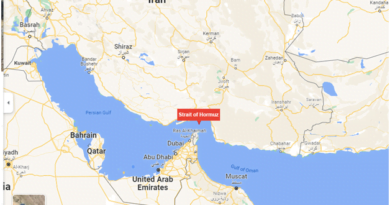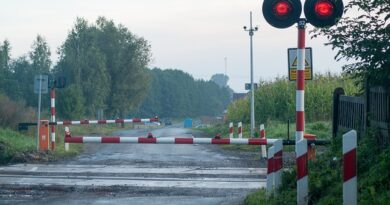PMKSY- Pradhan Mantri Krishi Sinchai Yojana
About Pradhan Mantri Krishi Sinchai Yojana
- It was launched in 2015 and is a Centrally Sponsored Scheme, providing central grants to the State Governments for specific activities
- Scheme launched to provide assured irrigation to cultivated areas, reduce wastage of water and improve water-use efficiency.
- It not only focuses on creating sources for assured irrigation but also aims to create protective irrigation by harnessing rainwater at the micro-level through “Jal Sanchay’’ and “Jal Sinchan”.
- The scheme has been formulated by amalgamating other existing schemes like Accelerated Irrigation Benefit Programme (AIBP), Integrated Watershed Management Programme (IWMP), and On Farm Water Management (OFWM).
- Ministries of Agriculture, Water Resources, and Rural Development are the implementing agencies of the scheme.
- PMKSY is being implemented in an area development approach, adopting decentralized state-level planning and projectized execution, allowing the states to draw their irrigation development plans based on district/block plans with a horizon of 5 to 7 years. States can take up projects based on the District/State Irrigation Plan.
- All the States and Union Territories including the North-Eastern States are covered under the program
- The motto of the Scheme is ‘Har Khet Ko Pani’.
- The funding pattern of the Scheme is 60:40 center-state share in the case of States, for the Himalayan and North-Eastern states, the center-state cost-share is 90:10, and for the Union Territories, 100% of the cost is borne by the central government.
Objectives of PMKSY
The broad objectives of PMKSY include
- Achieve convergence of investments in irrigation at the field level (preparation of district level and, if required, sub district level water use plans).
- Enhance the physical access of water on the farm and expand cultivable area under assured irrigation (Har Khet ko pani).
- Integration of water source, distribution and its efficient use, to make best use of water through appropriate technologies and practices.
- Improve on – farm water use efficiency to reduce wastage and increase availability both in duration and extent.
- Enhance the adoption of precision – irrigation and other water saving technologies (More crop per drop).
- Enhance recharge of aquifers and introduce sustainable water conservation practices.
- Ensure the integrated development of rainfed areas using the watershed approach towards soil and water conservation, regeneration of ground water, arresting runoff, providing livelihood options and other NRM activities.
- Promote extension activities relating to water harvesting, water management and crop alignment for farmers and grass root level field functionaries.
- Explore the feasibility of reusing treated municipal waste water for peri – urban agriculture.
- Attract greater private investments in irrigation.
PMKSY components
PMKSY consists of three major components implemented by various ministries. They are as follows.
Department of Water Resources, River Development and Ganga Rejuvenation, Ministry of Jal Shakti
- Component : Accelerated Irrigation Benefits Programme (AIBP)
- Component : Har Khet Ko Pani (HKKP)
- Sub component : Command Area Development (CAD)
- Sub component : Surface Minor Irrigation (SMI)
- Sub component : Repair, Renovation and Restoration (RRR) of Water Bodies
- Sub component : Ground Water Development
Department of Land Resources, Ministry of Rural Development
- Component : Watershed Development
Department of Agriculture and Farmers Welfare, Ministry of Agriculture & Farmers Welfare
- Component : Per Drop More Crop
Scheme overview
- PMKSY seeks to achieve convergence of investments in irrigation at the field level.
- PMKSY has been formulated amalgamating schemes viz. Accelerated Irrigation Benefit Programme (AIBP) of Ministry of Water Resources, River Development & Ganga Rejuvenation; Integrated Watershed Management Programme (IWMP) of Department of Land Resources; and On Farm Water Management (OFWM) component of National Mission on Sustainable Agriculture (NMSA) of Department of Agriculture and Cooperation.
- All the States and Union Territories including North Eastern States are covered under the programme.
- PMKSY is to be implemented in an area development approach, adopting decentralized state level planning and projectised execution, allowing the states to draw their irrigation development plans based on district/blocks plans with a horizon of 5 to 7 years. States can take up projects based on the District/State Irrigation Plan.
- The National Steering Committee (NSC) of PMKSY under the chairmanship of Hon’ble Prime Minister, will provide policy direction to programme framework and a National Executive Committee (NEC) under the chairmanship of Vice Chairman of NITI Aayog will oversee the programme implementation at national level.
Objectives of Components
PMKSY has the following programme components:
A. Accelerated Irrigation Benefit Programme (AIBP)
- To focus on faster completion of ongoing Major and Medium Irrigation including National Projects.
B. PMKSY (Har Khet ko Pani)
- Creation of new water sources through Minor Irrigation (both surface and ground water)
- Repair, restoration and renovation of water bodies; strengthening carrying capacity of traditional water sources, construction rain water harvesting structures (Jal Sanchay);
- Command area development, strengthening and creation of distribution network from source to the farm;
- Ground water development in the areas where it is abundant, so that sink is created to store runoff/ flood water during peak rainy season.
- Improvement in water management and distribution system for water bodies to take advantage of the available source which is not tapped to its fullest capacity (deriving benefits from low hanging fruits). At least 10% of the command area to be covered under micro/precision irrigation.
- Diversion of water from source of different location where it is plenty to nearby water scarce areas, lift irrigation from water bodies/rivers at lower elevation to supplement requirements beyond IWMP and MGNREGS irrespective of irrigation command.
- Creating and rejuvenating traditional water storage systems like Jal Mandir (Gujarat); Khatri, Kuhl (H.P.); Zabo (Nagaland); Eri, Ooranis (T.N.); Dongs (Assam); Katas, Bandhas (Odisha and M.P.) etc. at feasible locations.
C. PMKSY (Per Drop More Crop)
- Programme management, preparation of State/District Irrigation Plan, approval of annual action plan, Monitoring etc.
- Promoting efficient water conveyance and precision water application devices like drips, sprinklers, pivots, rain – guns in the farm (Jal Sinchan);
- Topping up of input cost particularly under civil construction beyond permissible limit (40%), under MGNREGS for activities like lining inlet, outlet, silt traps, distribution system etc.
- Construction of micro irrigation structures to supplement source creation activities including tube wells and dug wells (in areas where ground water is available and not under semi critical /critical /over exploited category of development) which are not supported under AIBP, PMKSY (Har Khet ko Pani), PMKSY (Watershed) and MGNREGS a s per block/district irrigation plan.
- Secondary storage structures at tail end of canal system to store water when available in abundance (rainy season) or from perennial sources like streams for use during dry periods through effective on – farm water management;
- Water lifting devices like diesel/ electric/ solar pumpsets including water carriage pipes, underground piping system.
- Extension activities for promotion of scientific moisture conservation and agronomic measures including cropping alignment to maximise use of available water including rainfall and minimise irrigation requirement (Jal sarankchan);
- Capacity building, training and awareness campaign including low cost publications, use of pico projectors and low cost films for encouraging potential use water source through technological, agronomic and management practices including community irrigation.
- The extension workers will be empowered to disseminate relevant technologies under PMKSY only after requisite training is provided to them especially in the area of promotion of scientific moisture conservation and agronomic measures, improved/ innovative distribution system like pipe and box outlet system, etc. Appropriate Domain Experts will act as Master Trainers.
- Information Communication Technology (ICT) interventions through NeGP – A to be made use in the field of water use efficiency, precision irrigation technologies, on farm water management, crop alignment etc. and also to do intensive monitoring of the Scheme.
D. PMKSY (Watershed Development)
- Effective management of runoff water and improved soil & moisture conservation activities such as ridge area treatment, drainage line 5 treatment, rain water harvesting, in – situ moisture conservation and other allied activities o n watershed basis.
- Converging with MGNREGS for creation of water source to full potential in identified backward rainfed blocks including renovation of traditional water bodies
Limitations
- A report of the Parliamentary Standing Committee on rural development in 2018 pointed out that only 10% of the projects taken up under the watershed development component of the Pradhan Mantri Krishi Sinchayee Yojana (PMKSY) have been completed.
- Bureaucratic bottlenecks act as a hassle in the process.
- Corruption is another issue.
- Delay in project implementation.
- No reference to accountability when it comes to failure in meeting targets.
- Per Drop More Crop” requires higher investment to introduce costly sprinklers and drip irrigation which small landowning farmers cannot afford.
- The extent of government contribution in the investment of micro-irrigation on behalf of farmers, or incentives for farmers who adopt such micro-irrigation, finds no mention in PMKSY.
- There is a lack of specialists. PMKSY is loaded with generalists especially bureaucrats.
- Inability to possess land before funding. This is adversely affecting the scheme leading to falling short of the targets.
- Large liabilities under AIPW and IWMP are affecting prioritization.
- Free water and power are a serious disincentive for adaptation of precision irrigation.
- Lack of cooperation and coordination between different departments.
Suggestion
- Project prioritization is an important issue. Projects sanctioned under the scheme should be completed in the shortest possible time.
- Where the requirement of funds is less such projects should be taken up first.
- Restoration, renovation, and rejuvenation of existing water bodies should be given very high priority for water management, particularly in drought-prone areas.
- Relaxation in program guidelines.
- Program implementation on a mission mode and through convergence with other similar on-going schemes.
- Maintenance of created assets.
- Regular monitoring and evaluation of achieved outcomes.
- Field specialists and people having specialized knowledge such as engineers should be included in the scheme.
- There should be efforts to ensure transparency in the implementation of the scheme.
- Accountability should be given due priority.
Way forward
Agriculture occupies a very important space in our economy. It contributes a significant amount to the GDP and employs a large number of people. The goal to double farmers’ income can be fulfilled by covering more and more areas under irrigation as it is a critical input for improving agricultural productivity which in turn will help in ensuring food and nutritional security. PMKSY has the potential to act as an important instrument in fulfilling all these targets.
Source: PMKSY
You can find many articles on AGRICULTURE (part of GS III) in our website. Go through these articles share with your friends and post your views in comment section.
Also Read:
Different types of irrigation and irrigation systems storage



